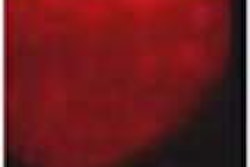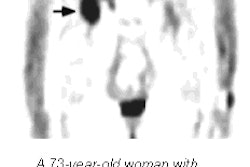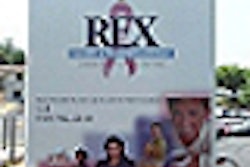CHICAGO - Norwegian radiologists found that full-field digital mammography with soft-copy reading is comparable to screen-film while also affording a higher patient throughput. In a presentation at the RSNA meeting on Monday, Dr. Per Skaane discussed his group’s successful results with FFDM, in comparison to screen-film, in a population-based breast cancer screening program at Ulleval University Hospital in Oslo.
For this study, 3,683 women between ages 50 and 69 were screened using the Senographe 2000D (GE Medical Systems, Waukesha, WI). Two views of each breast were acquired with FFDM and traditional mammography.
Independent double reading using a five-point rating scale for probability of cancer was done for both modalities, as well as a comparison of recall rate and cancer detection. A retrospective analysis of detected cancers, including a comparison of the malignant characteristics of the tumors, was performed by two different groups of reviewers: an internal group of radiologists at Ullevall, and an external group of breast imaging specialists from other institutions.
The reading time for each radiologist was also recorded for the FFDM exams in order to assess the value of soft-copy reading in a cancer-screening setting.
Among the 3,683 cases, 31 cancers were detected. FFDM found 23 of these cancers for a detection rate of 0.62%. Twenty seven cancers were diagnosed with screen-film (detection rate of 0.73%). Three cancers were detected only with FFDM, while seven cancer were found with screen-film only, Skaane said, although this result was not statistically significant (p=0.34).
The recall rate for FFDM was higher at 4.6% versus 3.5% for screen-film. The positive predictive value based on needle biopsy was 45.6% for traditional mammography and 40.4% for FFDM.
Based on the retrospective analysis, the internal group classified 21 of the tumors as probably malignant; the external group said 17 were most likely malignant based on the images.
While the internal group rated FFDM as the superior modality for predicting malignancy, the external group expressed a preference for screen-film. Skaane said this difference could be attributed to a learning curve: The internal group had worked with FFDM longer than the other radiologists. The external group had only reviewed 100 cases as part of their FFDM training program, he explained. The mean interpretation time for normal exams was 45 seconds.
In a second presentation, Skaane discussed the interobserver variability within this same study. Independent double reading was performed for both screen-film and FFDM using the same five-point rating scale for the probability of cancer. This time, four main readers were involved. The recall rate, the false negative (FN) cancer detection rate and the kappa values were calculated. In addition, the interpretation time for each radiologist was recorded.
Among the 31 cases diagnosed, the mean recall rate for the four readers for screen-film was 7.1% and 11.4% for FFDM.
"It is of more interest to look at the missed cancer rate on digital," Skaane said.
While there was no difference found between the FN cancer rate on either modality for two of the readers, the other two readers reported a marked difference in FN rates. One reader had a 77% FN rate with FFDM and a 30% rate on screen-film; the other reader had a 44% FN rate with FFDM versus 11% with screen-film. The latter two readers showed lower agreement on FFDM.
Once again, the mean interpretation time for all readers was 45 seconds. The reading time on FFDM was as long as 99 seconds when the diagnosis turned out to be ductal carcinoma in situ (DCIS) or microcalcifications. Skaane concluded that false-negative cancer rates on FFDM are due to factors other than image quality, such as the learning curve and shorter reading times, and acknowledged that more training on FFDM was in order.
One of the benefits of additional FFDM training is a faster throughput, according to previous reports. At the 2001 American Roentgen Ray Society meeting in Seattle, Canadian researchers found that FFDM shaves crucial minutes off exam times when compared with screen-film procedures, resulting in higher productivity for mammographers.
By Shalmali Pal
AuntMinnie.com staff writer
November 26, 2001
For the rest of our coverage of the 2001 RSNA meeting, go to our RADCast@RSNA 2001.
Copyright © 2001 AuntMinnie.com



















